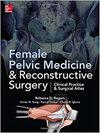制造商和用户设备设备经验报告与阴道网状物相关的事件:理解数据
IF 1.4
4区 医学
Q3 OBSTETRICS & GYNECOLOGY
Female Pelvic Medicine and Reconstructive Surgery
Pub Date : 2022-04-15
DOI:10.1097/SPV.0000000000001177
引用次数: 0
摘要
目的本研究的目的是通过确定提交报告的一方、投诉的性质以及报告是否经过编辑,来检查制造商和用户设施设备体验(MAUDE)数据库中涉及阴道网片的报告中的潜在偏见。方法对2000年1月至2017年12月提交给MAUDE数据库的所有涉及合成阴道网片的报告(40266份安全报告)进行鉴定。对这些报告中随机2%的样本(900)进行了深入审查,以确定具体的相关细节,包括报告人类型(患者、制造商、律师)和投诉/伤害的细节。结果在40226份MAUDE报告中,28473份(70.7%)是吊带报告,11793份(29.3%)描述了网状物产品增强盆腔器官脱垂修复。在深入审查的900份报告中,制造商、律师、医疗保健提供者和患者分别报告了46%、41%、10%和2%的条目。在提交后的4年内,18.6%的报告至少修改过一次。结论MAUDE数据库允许医生、制造商和患者立即报告因医疗器械而发生的不良事件。虽然该数据库是识别患者潜在危险的重要手段,但任何个人都可以提交报告,因此,在评估设备安全性时,它不应是唯一需要考虑的证据来源。此外,MAUDE数据库没有提供无并发症病例总数的信息。本文章由计算机程序翻译,如有差异,请以英文原文为准。
Manufacturer and User Facility Device Experience Reporting of Events Related to Transvaginal Mesh: Understanding the Data
Objective The aim of this study was to examine potential bias in reports to the Manufacturer and User Facility Device Experience (MAUDE) database involving vaginal mesh by identifying the party submitting the report, the nature of the complaints, and whether the reports were edited. Methods All reports submitted to the MAUDE database involving synthetic transvaginal mesh from January 2000 through December 2017 (40,266 safety reports) were identified. A random 2% sample (900) of these reports was reviewed in depth to determine the specific relevant details, including reporter type (patient, manufacturer, lawyer) and details of the complaint/injury. Results Of the 40,226 reports to MAUDE identified, 28,473 (70.7%) were sling reports, and 11,793 (29.3%) described mesh products augmenting pelvic organ prolapse repair. Of the 900 reports reviewed in depth, 46%, 41%, 10%, and 2% of entries were reported by the manufacturer, attorney, health care provider, and patients, respectively. In the 4 years after submission, 18.6% of reports were modified at least once. Conclusions The MAUDE database allows physicians, manufacturers, and patients to immediately report adverse events experienced due to medical devices. While this database is an important means to identify potential danger to patients, any individual can file a report and, thus, it should not be the sole source of evidence to consider when assessing device safety. Further, the MAUDE database provides no information into the total number of cases performed without complication.
求助全文
通过发布文献求助,成功后即可免费获取论文全文。
去求助
来源期刊

Female Pelvic Medicine and Reconstructive Surgery
OBSTETRICS & GYNECOLOGY-
CiteScore
2.10
自引率
12.50%
发文量
228
期刊介绍:
Female Pelvic Medicine & Reconstructive Surgery, official journal of the American Urogynecologic Society, is a peer-reviewed, multidisciplinary journal dedicated to specialists, physicians and allied health professionals concerned with prevention, diagnosis and treatment of female pelvic floor disorders. The journal publishes original clinical research, basic science research, education, scientific advances, case reports, scientific reviews, editorials and letters to the editor.
 求助内容:
求助内容: 应助结果提醒方式:
应助结果提醒方式:


